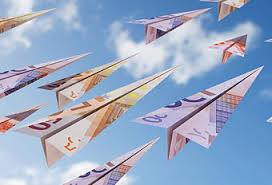The good news for Premier League club owners: top-tier English football has never been more profitable. The bad news: this is probably as good as it is going to get for at least the next five years – an age in terms of media technology.
Let’s start with a big number – £363.9 million.
That is the combined pre-tax profit so far reported by clubs which played in the Premier League in 2016-17. It amounts to a million pounds a day. And the thing is, only ten clubs – half the league – have to date published their figures.
There now looks to be every chance that the final tally will reach or exceed half a billion pounds. That would be not far off triple the previous record, set – far from coincidentally – in 2013-14, the first year of the previous three-year broadcasting rights cycle.
It beggars belief at first blush that clubs should have achieved such remarkable bottom-line growth at a time when top players’ wages, and hence presumably agents’ percentages, are as outrageous as ever and transfer fees for the most coveted talents have been going through the roof.
But 2016-17 was the year when the fruits of the astonishing 70% increase in the valuation of the league’s domestic broadcasting rights, negotiated by Richard Scudamore and his Premier League team, were first passed on to clubs.
Put simply, not even the most generous wage regime could keep pace with such explosive top-line growth. In any case, the amortisation rules help to ensure that even big-spending clubs habitually generate a profit on transfers.
To date, every single club – ten out of ten – has managed a pre-tax profit, but then, one is tempted to observe that if a Premier League club could not generate a profit in conditions pertaining in 2016-17, it is unlikely ever to do so without wholesale restructuring.
Finance directors and chief executives should savour this moment; the ‘cashcade’ that lifted them irresistibly into the black last season looks unlikely to be repeated until at least 2022-23, and maybe never with such vigour.
Not that we are set to see a debilitating crash from the heights of profitability achieved in 2016-17; more a gradual subsidence, as costs catch up with the one-off turnover jump and further top-line growth becomes harder to generate.
We have become used to a cycle in which clubs’ financial performance peaks in the first year of the three-year period covered by each successive set of broadcasting deals. 2016-17 will be the financial Everest of the Premier League era.
Unless clubs can achieve a level of cost control that has so far eluded them, this year and next will see aggregate profitability decline. That would fit the established pattern, with the strength and imagination of management largely determining where on the scale from financial K2 of the Premier League era to financial Primrose Hill of the Premier League era these seasons will register.
The reason one feels able to look further into the future with a certain amount of confidence is the outcome to date of the league’s 2019-22 TV auction. This looks likely to generate nowhere near such a turnover jump for clubs in 2019-20 as in 2016-17, although growth in international markets is generally expected to produce some upward momentum.
With UEFA’s broadcasting rights cycle for club competitions running from 2018-21, the Premier League’s Big Boys may be helped out by an increase in the sums they earn from the Champions League. Other Premier League clubs, however, may find themselves needing to accelerate growth in sponsorship and match-day income just to slow the rate at which overall margins are being eroded.
My worry is that a prolonged spell of subdued growth in the money the league receives from TV and media companies might lead to the big clubs becoming impatient and endeavouring to derive revenue growth in other ways, for example via a renewed push for a bigger share of the league’s international rights income.
While a change to the status quo, whereby this income has traditionally been distributed evenly across the 20 clubs, might be the last thing one wants from a competitive balance standpoint, it seems indisputable that, say, Manchester United generates more international interest than, say, Burnley.
Such a scenario might also reinvigorate the spectre of that old chestnut, a breakaway league populated by the dozen or so European super clubs.
English football fans, though wondrously brand-loyal, are a devilishly difficult lot to keep satisfied. The nirvana of profitability attained in 2016-17, whether above half a billion pounds or below, will be accompanied no doubt by complaints that more big-name players should have been signed and seat prices reduced. I cannot help wondering though whether, a decade or so from now, we won’t all be looking back at this time with nostalgia.
David Owen worked for 20 years for the Financial Times in the United States, Canada, France and the UK. He ended his FT career as sports editor after the 2006 World Cup and is now freelancing, including covering the 2008 Beijing Olympics, the 2010 World Cup and London 2012. Owen’s Twitter feed can be accessed at www.twitter.com/dodo938.

